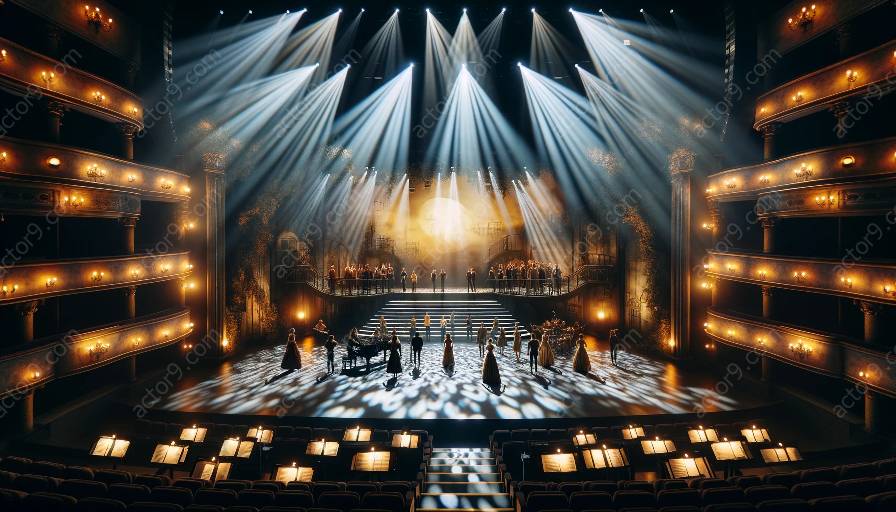Lighting design plays a crucial role in the visual storytelling of musical theatre, working hand in hand with set and costume design to create a captivating and immersive experience for the audience. By exploring how these elements interact, we can gain a deeper understanding of the artistry and technical aspects behind the magic of musical theatre production.
1. Understanding the Role of Lighting Design in Musical Theatre
Lighting design in musical theatre is a complex art form that goes far beyond simply illuminating the stage. It involves the careful selection and placement of lighting fixtures, as well as the creation of specific lighting cues and effects to enhance the mood, atmosphere, and visual dynamics of each scene. By manipulating light and shadow, lighting designers can direct the audience's attention, evoke emotions, and emphasize the performers and set elements.
2. The Interplay between Lighting and Set Design
Set design in musical theatre provides the physical environment in which the story unfolds. It includes the construction of sets, props, and scenic elements that define the world of the musical. The interaction between lighting and set design is crucial, as lighting can dramatically alter the appearance of the set, creating different moods and atmospheres. For instance, the same set may look ominous and mysterious under moody blue lighting, while warm, golden lighting can make it appear inviting and cheerful.
3. The Fusion of Lighting and Costume Design
Costume design in musical theatre contributes to the visual aesthetics and character portrayal. Lighting interacts with costume design by highlighting and accentuating the costumes, adding depth and dimension to the characters. Different lighting colors and intensities can transform the look and feel of the costumes, helping to convey the emotional and thematic elements of the story.
4. Collaborative Process of Designers and Directors
The interaction between lighting, set, and costume design is a collaborative process involving designers, directors, and the entire production team. Through communication and artistic synergy, these designers work together to ensure that the visual elements harmonize seamlessly, enhancing the overall storytelling and emotional impact of the musical.
5. Creating a Cohesive Visual Tapestry
When all these design elements come together in musical theatre, they form a cohesive visual tapestry that enriches the audience's experience. Each design component influences and interacts with the others, contributing to the overall aesthetic and narrative coherence of the production.
In Conclusion
In conclusion, the dynamic interaction of lighting, set, and costume design in musical theatre is an integral aspect of the creative process. By recognizing the interconnectedness of these elements, we gain a deeper appreciation for the intricate artistry and technical precision that go into bringing a musical to life on stage.




































